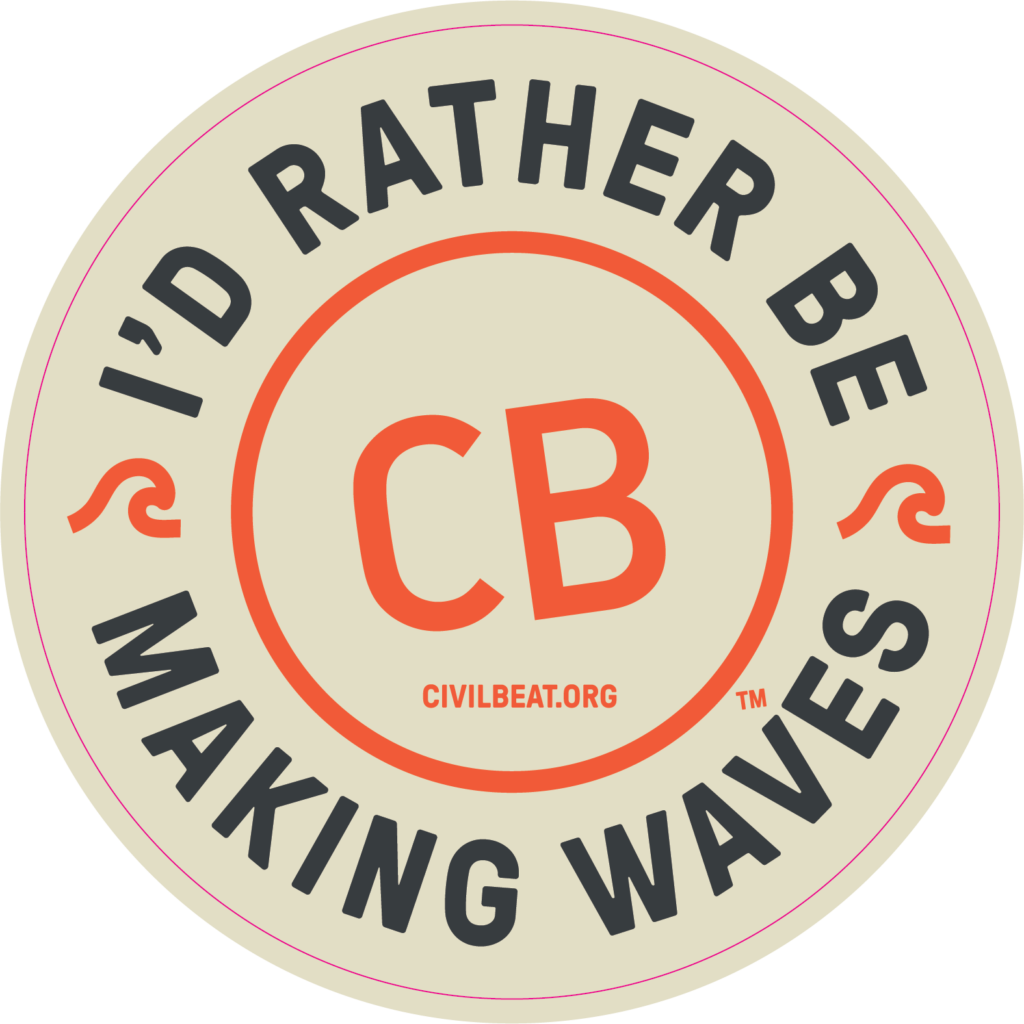Newsroom overview
A nonprofit digital local news organization covering Hawaii
Honolulu, Hawaii, U.S.
2010
2016
650,000
5,500
Honolulu Civil Beat began in 2010 as a for-profit subscription publication. With the transition to a nonprofit member-supported organization in 2016, the messaging went from “Become a subscriber at $5 a month” to “This is Civil Beat, this is who we are. If you trust us and value our reporting, please make a $5 monthly gift,” as Vice President of Operations and Philanthropy Ben Nishimoto summed it up.
For that second message to resonate, Civil Beat had to re-introduce themselves to readers as a friendlier, more accessible news organization.
At the time, one of their bumper stickers read, “Smart, disruptive, never sorry” – a nod to their hard-hitting reporting and their status as a disrupter to traditional media. They realized that messaging that held Civil Beat at arm’s length from the community was a poor fit for where they were headed – a member-supported news organization.
In the process of rebranding, they made changes to everything from their onboarding campaign to their events strategy to bring their brand in line with the relationship they wanted to have with audience members, especially potential members.
Why this is important
Branding is about more than logos and taglines. It’s the experience that audience members have with you. So when Civil Beat rebranded, they didn’t just change up surface level items. They implemented an extensive onboarding campaign to help readers understand how they worked, they pivoted their events strategy, and made sure that members showed up in their work much more prominently. They worked hard to reduce the barriers between their newsroom and the community, and made sure that their communications reflected that.
“We did a lot more explaining, a lot less telling, and embraced a more nuanced approach to messaging. Over time we told readers pieces of our story in digestible bits in a much more detailed way,” Nishimoto said.
If your organization is preparing to launch a membership program, or your program is struggling to grow, it’s worth taking a look at your branding and making sure that it aligns with your value proposition and that it sends the signal that members are a part of that value proposition.
What they did
In 2016, as it prepared for the transition, Honolulu Civil Beat hired a local branding and marketing firm to guide the newsroom through a branding process. Staff answered questions such as what Civil Beat means to them and how they fit into its mission. The only problem was that audience members weren’t a central part of that process – and Civil Beat was about to begin asking them for support.
At the time, Civil Beat’s branding and messaging “aggressively positioned Civil Beat as outliers in the media landscape. Being an outlier without establishing reader trust can be a bad combination,” n Nishimoto said. He had just joined Civil Beat.
“If you’re disrupting the status quo but people have no idea what you are, what you stand for… it grows suspicion, not trust. That was the disconnect I found and that we quickly realized.”
Civil Beat already had a strong in-person events strategy at the time, but events were largely about current events and called “Beat Ups.” Inspired by the Voice of San Diego, they began inviting the community into their newsroom regularly for morning coffee, which they still do today.
These gatherings have no agenda. They’re just an opportunity for supporters and readers to chat, ask questions, and share concerns, and sometimes what journalists hear in those chats ends up shaping Civil Beat’s reporting. Those morning coffees remain a core part of their events strategy (although they’re on pause because of the COVID-19 pandemic).
They also put a drip campaign, or onboarding series, in place for their main newsletter. When they started it the series had just three or four emails, but today it has more than a dozen emails, including:
- Why local journalism is important and what journalism should be to Hawaii
- How Civil Beat exposes wrongdoing and pushes for accountability
- What nonprofit journalism is and how that differs from legacy media
- Who their supporters are and how they make money (including what their relationship is with Pierre Omidyar,* the founder of eBay and their largest donor)
- Why they push for transparency and list all of their donors on their site
- Why they’re committed to in-person engagement
Through a process like that, “the message naturally pivots to something less in your face, a lot more explanatory. It becomes, “Civil Beat is aggressive for a reason. We’re outliers because we’ve done this, this, and this,” Nishimoto sums up.
The drip campaign and events reduced the barriers between readers and journalists, Nishimoto said. They also focused on getting their reporters out in front of the community and making them more comfortable interacting with readers in a casual way.
As Civil Beat began gaining supporters, they also adapted their marketing strategy as well, by featuring member testimonials on the homepage, said audience development editor Landess Cole. They made sure to integrate audience members into their visuals, making the website less cold and impersonal.
*Pierre Omidyar also established Luminate, one of Membership Puzzle Project’s funders.
The results
Cole is constantly adopting things she hears from members in Civil Beat’s messaging, as she did in this winter 2019 membership campaign email and this Facebook post in 2018. This means the brand messaging is constantly evolving with members’ understanding of their work.

Their donations page includes a place where supporters can explain why they chose to become a supporter. Cole says that 85 to 90 percent of supporters take the time to fill it out. The answers are a reflection of what supporters value about them.
Those answers automatically post to a channel on the newsroom’s internal Slack workspace so the whole newsroom can hear how the community sees them. Cole incorporates many of those comments in future fundraising materials. When someone wrote that they supported Civil Beat because it’s “Strong, independent, and ad-free,” she knew to include that in their next email pitch.
“The one thing that hasn’t changed is the work that the reporters do – editorial strategy – all of those things we worked around. We’re packaging it differently now. We wanted to make sure the reporters understood that what they’re doing now and in the future is important and we don’t want to meddle with it too much. We just want to position it in a more digestible way,” Nishimoto said.
What they learned
Different branding resonates with different people. The older Civil Beat branding – encapsulated in the bumper sticker “Smart, disruptive, never sorry” – worked with a certain type of audience member, someone who was already really into local journalism, Cole said. But that segment of potential readers is quite small. Civil Beat wasn’t worried they would lose those readers if they softened their tone a bit. “By expanding that brand and taking away the aggressiveness of that branding campaign, we expanded our audience appeal immensely,” Cole adds. It can be hard to abandon a brand identity you’ve had for awhile, but audience research can help you understand if it’s time to move forward.
Key takeaways and cautionary tales
Your audience members should be a central part of your branding process. Civil Beat hired a branding agency to support them in their branding process, but the real changes happened after they began actively soliciting feedback from the community about how they felt about Civil Beat and what they needed to know about it. Audience research is a crucial part of any branding exercise, but especially one with the end goal of increasing audience member support for your organization.
Other resources
- INN at Home, presentation: “Branding is not a dirty word”


